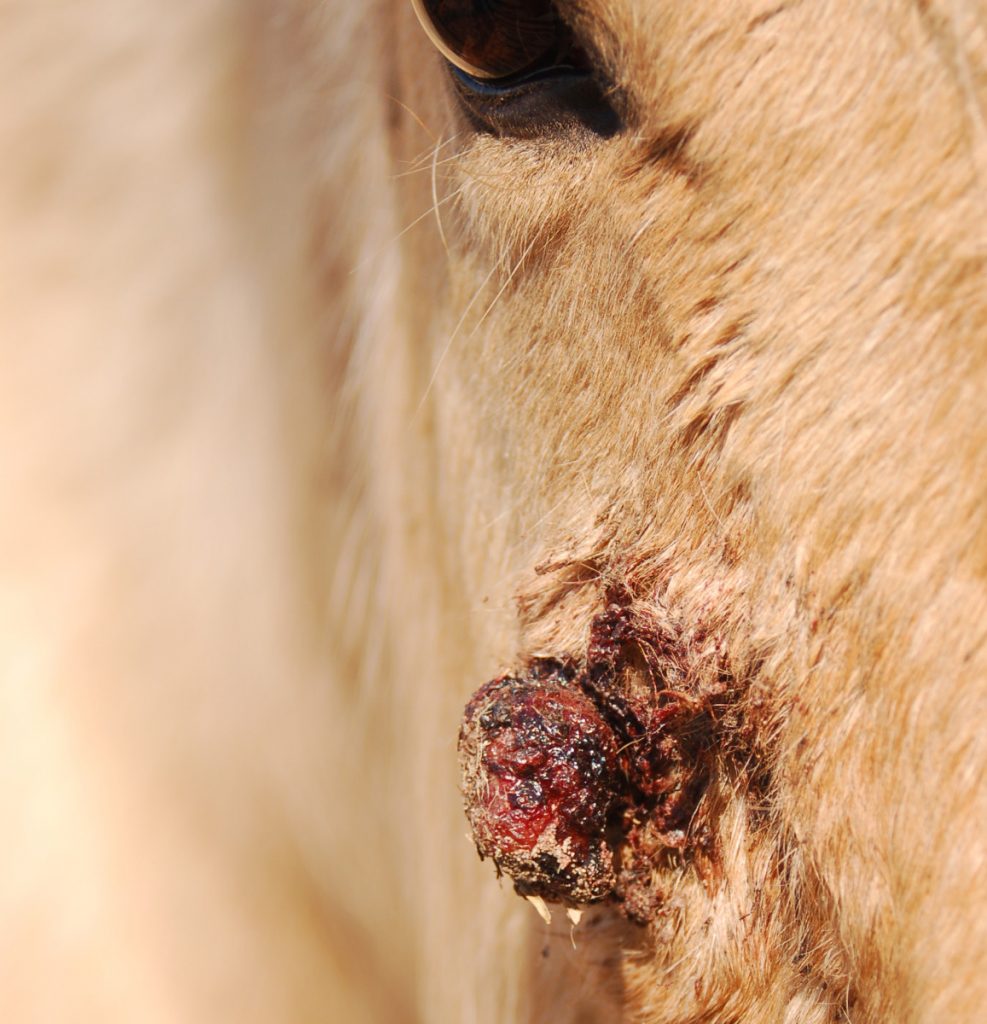You’re grooming your horse before an evening ride when you spot it: an ugly, wart-like growth on your horse’s leg. How did it get there and more importantly, how can you get it to go away?
These wart-like growths are known as sarcoids, and they are a common equine skin disorder often appearing in young to middle-aged horses. They can develop nearly anywhere on the body but most commonly appear on a horse’s abdomen, sheath, legs, ears, muzzle, or around the eyes.
What Causes Sarcoids?
While the exact cause of sarcoids isn’t clear, many believe they are caused by bovine papilloma virus or a related virus that is transmitted by flies and other biting insects. Some sarcoids will go away on their own, in time. Others, however, can grow quite large or multiply and present problems.

Sarcoid Treatments
Standard treatments include:
- radiation therapy (most successful, but most expensive);
- cryotherapy (freezing with liquid nitrogen);
- surgical removal;
- laser therapy;
- litigation (tight band place around sarcoid to cut off blood supply);
- injection of immune stimulants;
- chemotherapy drugs; and
- topical agents.
Some holistic treatments include:
Thuja: This homeopathic remedy can be given internally, and thuja cream also can be applied to the sarcoid itself.
Bloodroot Extract: Derived from a plant called Sanguinaria and marketed under the trade name Xxterra, this option appears to work for some small sarcoids and also larger sarcoids when a more expensive treatment isn’t an option. Caution with this treatment: it works by ‘burning’ the sarcoid cells and can be somewhat painful for the horse).
Turmeric: This immune-boosting herb can be fed to horses or applied topically as a paste.
Mushroom Matrix: A newer and lesser known treatment for sarcoids, this blend works by boosting the immune system. You may want to use it in conjunction with another treatment, however.
Keep in mind that not every treatment will work for every type of sarcoid. If in doubt, seek the help your veterinarian. While sarcoids aren’t life threatening, they can be uncomfortable for the horse, especially if they develop around sensitive areas such as the mouth or sheath.
If you’ve successfully dealt with sarcoids, feel free to share in the comments!
**
Casie Bazay is a freelance and young adult writer, as well as an owner/barefoot trimmer and certified equine acupressure practitioner. She hosts the blog, The Naturally Healthy Horse, where she regularly shares information on barefoot, equine nutrition, and holistic horse health. Once an avid barrel racer, Casie now enjoys just giving back to the horses who have given her so much. Follow Casie at www.casiebazay.com.



